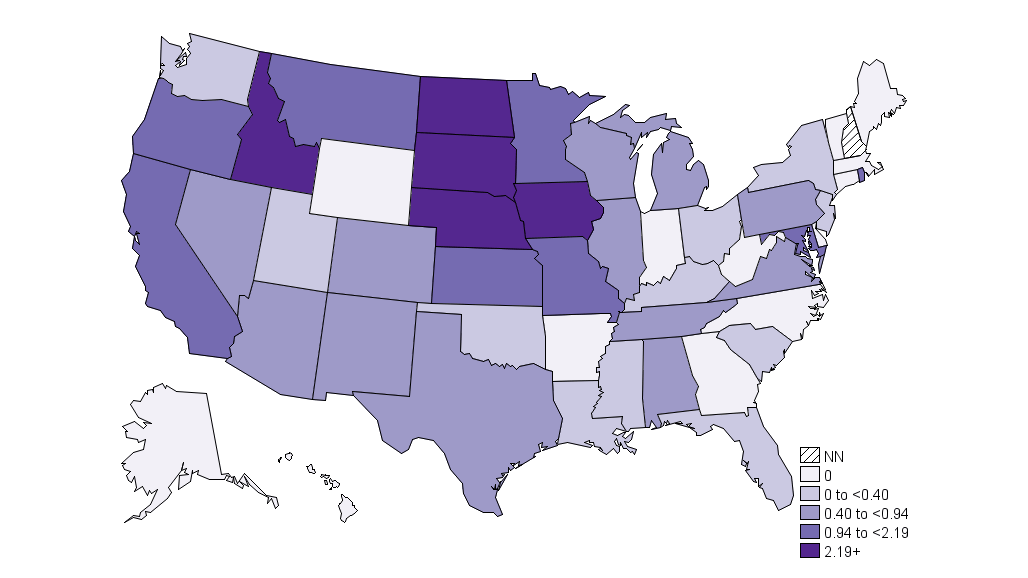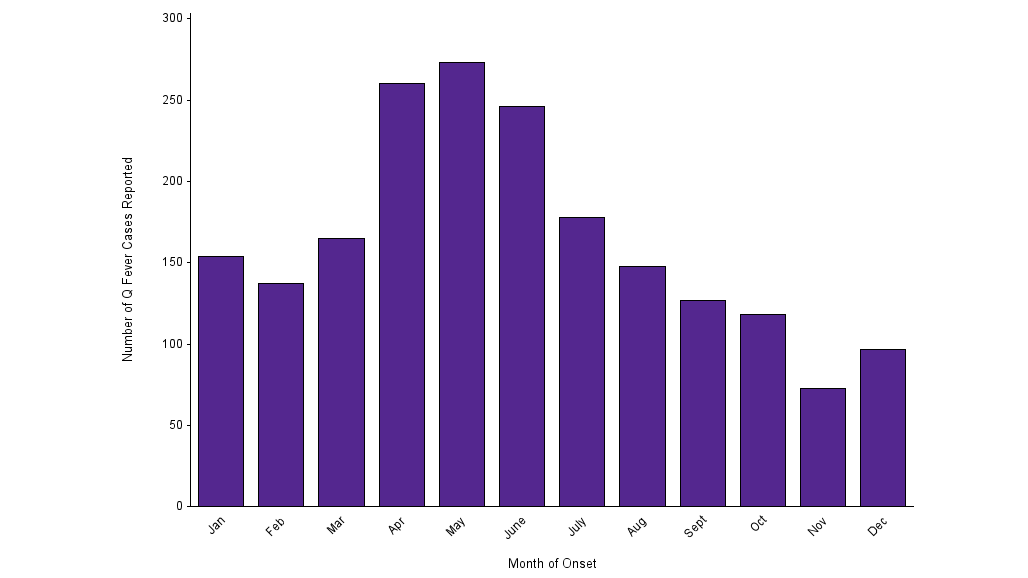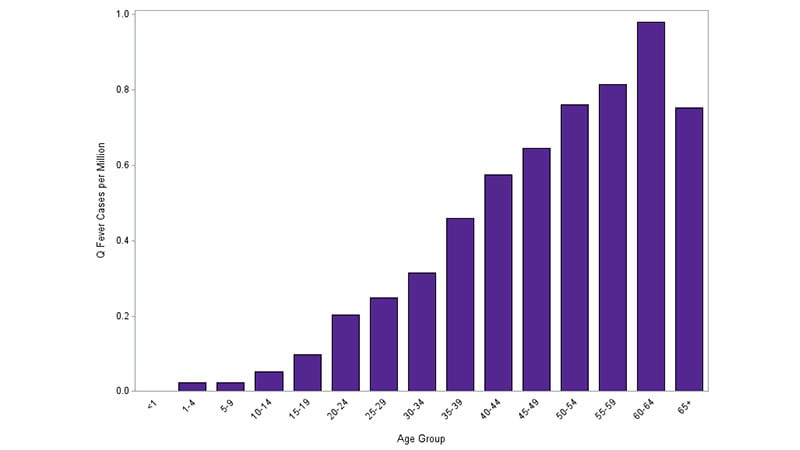At a glance
- Q fever annual reported cases 2000-2019
- States reporting Q fever
- Seasonality of Q fever
- People at risk of Q fever

Q fever in the United States
Q fever was made a nationally notifiable disease in the United States in 1999. CDC compiles the number of cases reported by state and local health departments and reports national trends. The number of Q fever cases reported to CDC increased, from 19 cases reported in 2000, to 173 cases reported in 2007. In 2008, the Q fever case definition was changed to allow for the reporting of chronic and acute Q fever separately. During 2008–2013 the number of reported cases decreased slightly, relative to 2007, returning to high levels in 2014. In 2019, 178 acute Q fever cases were reported, as well as 34 chronic Q fever cases.

Geography
The number of cases of Q fever per million population varies by state, with cases most frequently reported from western and Great Plains states where ranching and rearing of livestock are common. More than one third of cases (36%) are reported from three states (California, Texas, and Iowa). Sporadic reports of cases may result when people travel to other states or countries and are infected with Coxiella burnetii.

Data Table: Annual Reported Incidence (per million persons) for Q fever - United States for 2019
Seasonal Trends
Cases of Q fever can occur during any month of the year. Most cases of reported illness begin in the spring and early summer months, peaking in April and May. This timeframe is also the peak of birthing season for cattle, sheep and goats.

Data Table: Number of Q Fever Cases Reported by Month of Onset, 2000-2019
People at Risk
More cases of Q fever are reported in older people, especially men. However, men may be more likely to hold jobs with increased risk for Q fever exposure, such as ranching or livestock management. People who live or spend time near ranches and livestock facilities are at increased risk for Q fever infection. Studies have shown that people with a history of heart valve defects, endocarditis, or heart valve implants may have increased risk of chronic infection and severe disease.

